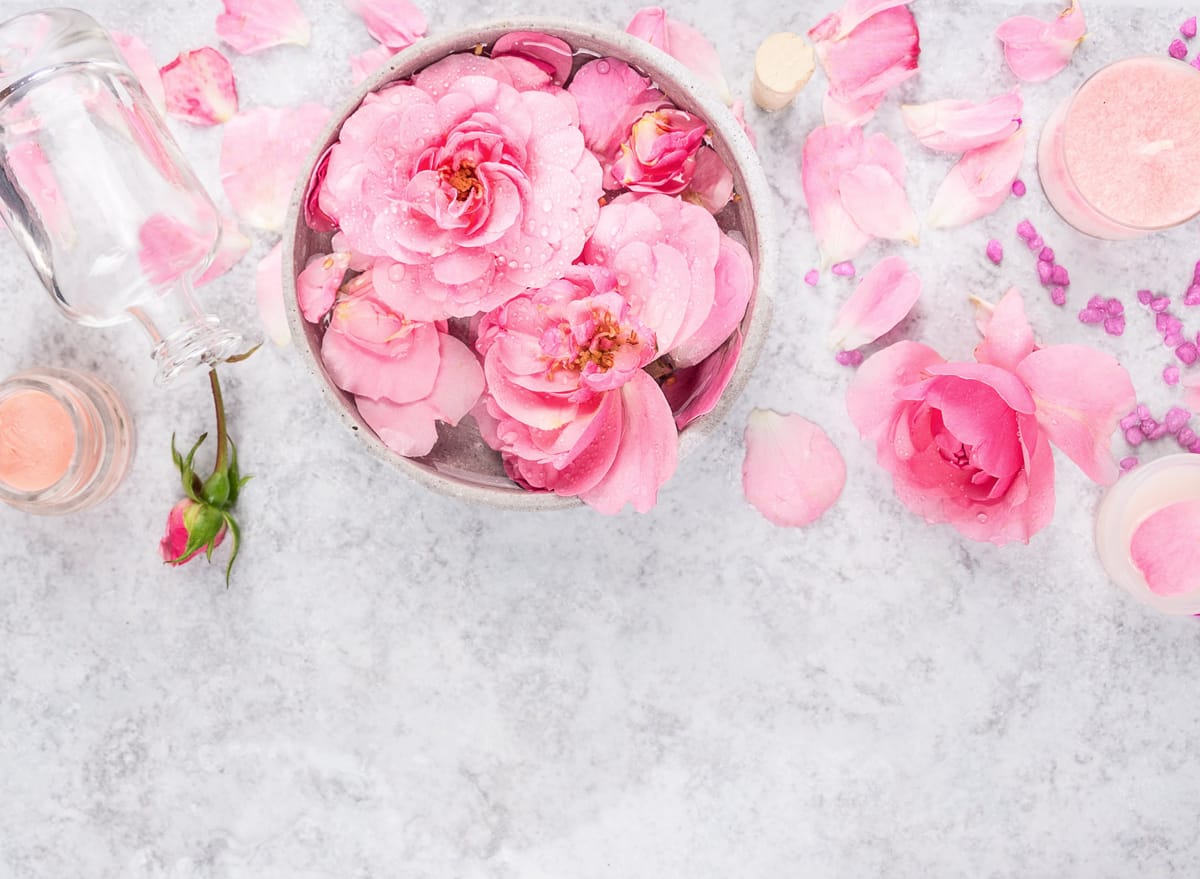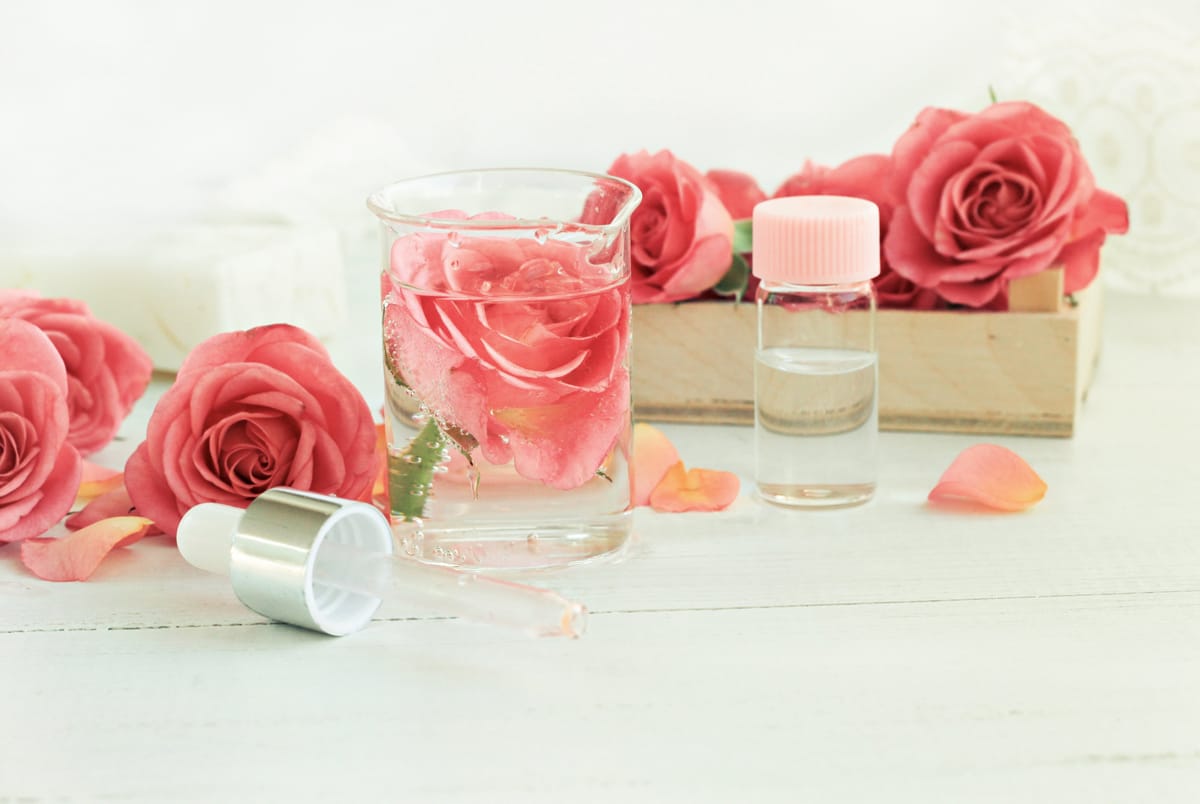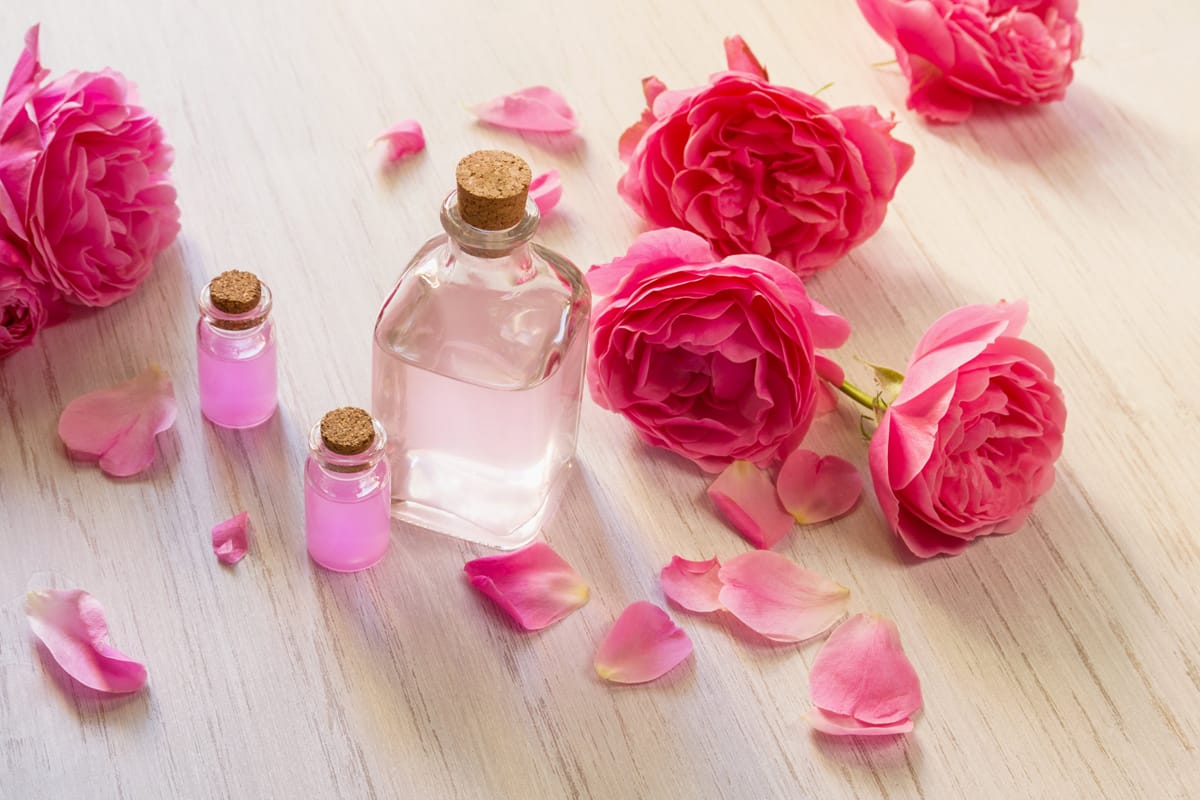Rose Water: What You Need to Know

We’re living in the era of self-care. Everywhere we turn, new life hacks are sprouting up to make our day-to-day easier. Rose water has been a long-time beauty hack circling the cosmetics industry, but it can often be expensive. So, let’s talk about rose water: what it is, why it’s good for you, and how you can make it on your own.
WHAT IS ROSE WATER?
It’s really as simple as it sounds—water that’s been infused with rose petals used for therapeutic and medicinal purposes. The rose dates back millions of years, but it was first cultivated for personal garden uses in China only 5,000 years ago. Rose water, on the other hand, was mastered in the 16th Century in Bulgaria’s Rose Valley, a place said to house the perfect conditions for roses thanks to its brilliant soil, humidity, cloudiness and precipitation. Since the essence of rose has been said to rejuvenate the skin, Bulgarian women had a reputation for being incredibly beautiful.

WHY USE ROSE WATER?
There are generally two ways to utilize rose water: topically and internally. Either way, its benefits are aplenty. For topical uses:
- Soothes and repairs skin. In general, rose water is a cure-all for anything skincare. The flower contains tannin, an astringent, which can reduce the size of enlarged capillaries underneath the skin, something that causes redness and eventually wrinkles. Thus, its anti-inflammatory properties can help reduce the redness and puffiness of acne and relieve symptoms of eczema and rosacea.
- Prevents illness and treats infections. Roses have been shown to have both antibacterial and antimicrobial properties, especially combatting coli. This is because roses have high phenylethyl alcohol content, a characteristic of anything antimicrobial. For this reason, rose water can be used to prevent illness or as a disinfectant.
- Contains powerful antioxidants. Roses are thought to include lipid peroxidation inhibitory effects which protect your cells from damage externally and internally. This also means that rose is a source of treatment and prevention of many free radical diseases.
For ingestion:
- Eases sore throats. In mild sore throats, rose water has been found to reduce pain thanks to the analgesic effect in rose. Though more research is needed, anecdotal evidence suggests that rose water has a relaxant effect on respiratory systems. In fact, North American Indian tribes used rose root as a cough remedy.
- Relieves headaches and improves mood. Psychological effects of rose water are just as potent. Not only does rose water in aromatherapy help reduce headaches, but it has also been found to help relax central nervous systems in mice. This suggests that rose water has antidepressant properties.
- Reduces digestion problems. By improving bile secretion and relieving digestive upset, rose water has been used in folk medicine for hundreds of years. Rose water can also be utilized as a gentle laxative.

CAN I MAKE IT MYSELF?
DIY rose water is a pretty easy recipe, considering you have Damask roses nearby (the rose most studies examine). If you don’t, no worries. Dried roses work relatively the same! When it comes to choosing your rose petals, the most important thing is making sure they’re organic so your rose water doesn’t come with a side of pesticide. You can either use a simmering method or distilling method, depending on your needs.
Simmered rose water is a quick method that yields a product with a shorter shelf life (we’ll discuss this method, as it’s easiest)
Distilled rose water, a more time-consuming method that creates a hydrosol and offers a more shelf-stable product.
For simmered rose water:
- ¼ cup dried rose petals (or ½ cup fresh petals)
- 1 ½ cups Primo® Water
- Saucepan and lid
- Several cheesecloths or sieve
- Bottle for storage
Combine water and rose petals in saucepan, cover, and bring to a boil. Reduce temperature to low and simmer for 5-10 minutes, or until the color of the petals have faded. Let cool completely, leaving covered. Pour mixture through cheesecloth or sieve to strain. Pour strained liquid into a bottle, spray nozzle optional. Keep in the fridge for several weeks or on the counter for up to one week.

HEALTHY WATER FOR HEALTHY HABITS
The base of rose water is…you guessed it…water! And if you want to reap all the incredible benefits of this beauty hack, make sure your water is on-point. Tap water can often be riddled with harmful microorganisms, heavy metals, trace pharmaceuticals and more. Spoiler alert: those are no bueno.
Choosing a trusted source like Primo® Water can ensure you’re getting high-quality water that’s free of harmful additives. Primo undergoes a 5-step Reverse Osmosis (RO) purification process to make sure that you’re getting better, safer water in every drop. Want to find Primo® Water near you? Our store locator can help you out.
